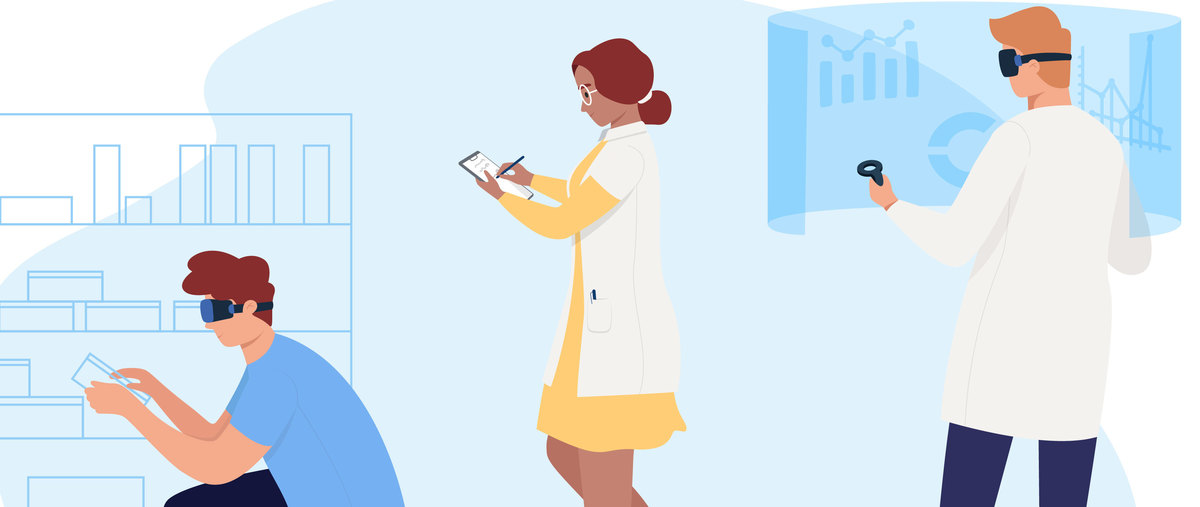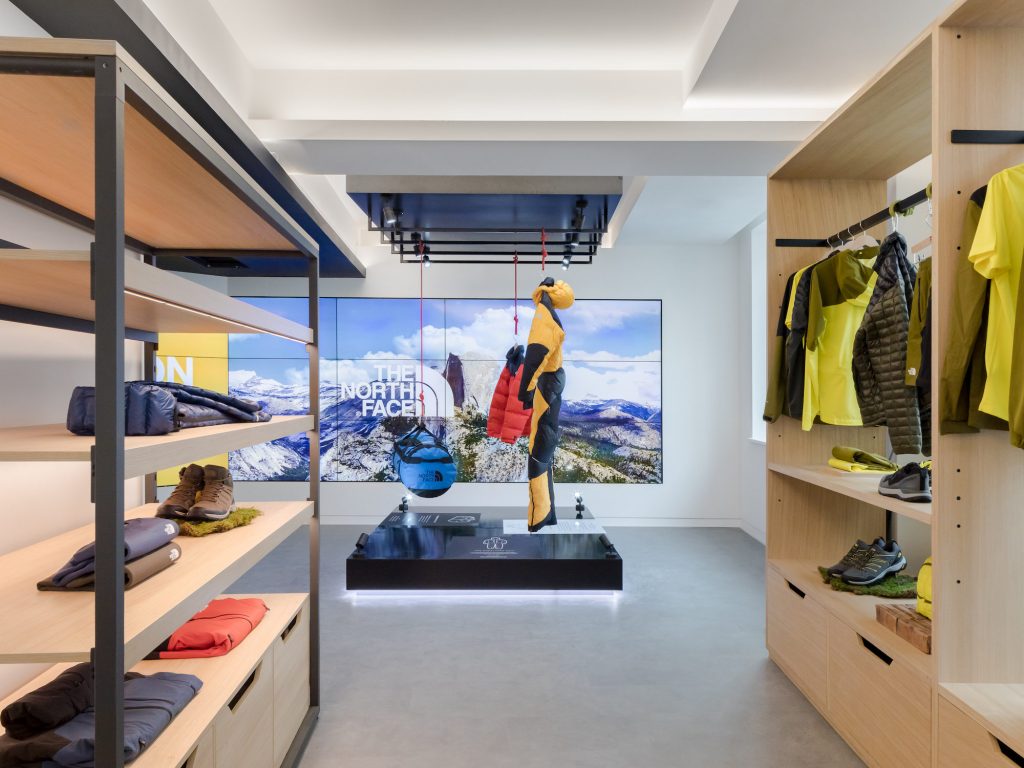5 Ways to Use Augmented and Virtual Reality in Business and Consumer Marketing – Part II

Marketing is one of the most promising virtual and augmented reality business applications. From auto manufacturers to higher learning institutions, from cosmetics retailers to television networks, companies are leveraging immersive experiences to market themselves in fresh and creative ways.
The first part of this article was focused on how augmented reality (AR) and virtual reality (VR) can become the basis of powerful marketing tools. This part will feature three VR and AR applications that help take marketing and a whole business to the next level.
More Applications of Augmented and Virtual Reality in Business and Consumer Marketing
Building Brand Connection & Loyalty
A brand stands for much more than the actual products, and meaningful marketing is not limited to ads and promo campaigns. Forward-thinking brands are striving to move people emotionally and to create experiences they can connect with. Both virtual and augmented reality applications can help to do this beautifully.
For example, in late 2018, BBC Two was promoting its TV series “Civilisations.” An eponymous festival was bringing together British museums and galleries through digital products and events. As part of this, a free curiosity-sparking AR app for iOS and Android was released. Civilisations AR, built by Nexus Studios using the Unity middleware, features about forty 3D models of artefacts from across the globe.
Empowering the public to examine hidden cultural treasures at home or anywhere they please is perfectly in line both with the promo campaign and with BBC’s long-time commitment to making the art and culture of the UK more accessible.
The United States Postal Service, which seems to be equally determined to provide magical experiences for gift-givers and gift-receivers, has been developing AR features since 2014. In December 2016, it offered a free AR mobile app for the senders and recipients of Priority Mail boxes. The users could scan the box and share or receive a thank-you or greeting message via social media. Cute animations increased the share-worthiness of the experience.
Augmented reality apps like this can help companies stay relevant both on the tech side and in the hearts of customers.
AR in social networks is increasingly significant for building brand connections. For example, Facebook and Snapchat AR filters allow brands to communicate their messages organically and give a new side to a brand’s voice. Snapchat filters are especially simple, cheap, and effective for advertising content. These AR apps can be relevant to specific events, businesses, and more. While users are having fun and sharing the filters, brand awareness and brand engagement are increasing.
Virtual reality has the power to show a situation vividly, beyond the statistics, to the public. This ability has been used to great effect by charities and cause-driven groups, but it can be leveraged by commercial organizations with equal success.
VR is a part of the content marketing strategy of Toms Shoes. The company’s motto “One for one” means that for every pair of shoes purchased, they give away a pair to a needy child. In 2016, Toms released a VR project eloquently titled “A Walk In Their Shoes.” The 360° video chronicled a customer’s journey to Colombia to meet a child he benefited with his purchase.
The immersive experience builds trust, shows the stakeholders exactly where their money is going, and gives an example of making a difference in the world. Toms had set it up in-store for patrons to experience, but even without a VR headset, the video may be moving enough to put Toms on a viewer’s list for the next shoe purchase.
A few years ago, the New York Times delivered Google Cardboard goggles to subscribers so that they could watch a VR film. The promo campaign essentially acted as an incentive or reward for brand loyalty, but it happened a few times more with different films. In 2016, they promoted a VR documentary that was available to download for a mobile app and Google Cardboard. “The Displaced,” shot by Vrse.Works, immersed the viewer in the lives of three child refugees, showing the devastating effects of war. It earned the top prize in the Lions Entertainment contest. “This is a piece of entertainment content that moves the brand and the business that created it forward,” the jury president said. It wasn’t a purely marketing campaign, but the publicity NYT generated by distributing a million free Google Cardboards to readers grabbed headlines. The emotional intensity the film provided reinforced brand loyalty for the VR goggles, the newspaper, and its films.
These virtual reality marketing examples prove the medium’s ability to introduce viewers to environments and activities they might have never experienced otherwise. It may also instill an interest in the related products. In 2017, Adidas and Somewhere Else agency created a 360° view of the extreme adventure of two free climbers sponsored by Adidas’ division TERREX. A VR headset and two sensory remote controls enabled any member of the public to follow them rock by rock to the peak of the mountain Delicatessen, experiencing the world from new heights.
The VR campaign not only marketed outdoor shoes, apparel, and accessories spectacularly. It delivered thrilling sensations to cement the pairing of “Adidas” and “excitement” in many viewers’ heads.
Gamification, another amazing ability of virtual reality, also helps brands to stand out from the crowd, capture the audience’s attention, educate and engage them emotionally, and be remembered.
For example, the Progressive Group of Insurance Companies has been title sponsor for numerous boat and sport shows of the National Marine Manufacturers Association. For years, Progressive was helping provide boating education to thousands of attendees, simultaneously promoting its boat insurance. In 2018, as a centerpiece for its boathouse-themed exhibit, NEXT/NOW digital agency created an interactive VR boat race game.
The Progressive LAKE DASH VR Trade Show Experience included Oculus Rift goggles, a steering wheel, and sensors mapping users’ hands into the virtual experience. There, the players raced against time, sailing through checkpoints, avoiding obstacles, and collecting power boosts.
The VR game proved itself an effective attractor for Progressive. In the first four months of 2018, over 385,000 people visited its booth. Besides the fun and promotion of boater education and safety, the catch was in having the participants register with brand ambassadors first, where they provided contact info and details about their current provider.
Consumer Research
In summer 2019, VF, the owner of Timberland, Vans, and other brands, opened an unusual retail space in London. Axtell Soho HQ is not only a showroom and digital hub. It showcases the use of technology to bring the brands’ stories to life. One of the key features is avatar-based virtual mannequins showcasing various seasonal looks in 3D. Visitors can use touchscreen displays to change the lighting and view products in different scenarios.

At least initially, Axtell Soho will be a “showcase” for business partners. There, VF will be testing and learning new technology features for more dynamic, relevant, and contextual in-store and online customer experiences.
At least initially, Axtell Soho will be a “showcase” for business partners. There, VF will be testing and learning new technology features for more dynamic, relevant, and contextual in-store and online customer experiences.
VF aims to see what helps draw people into a brand’s meaning. “This industry needs to get out of the mode of that one-time transaction; it really is about building that loyalty, that engagement with our consumers, back to the brand and the purpose that these brands bring to life,” VF’s chief digital officer Velia Carboni said.
VR heat mapping may be one of the most useful technologies for consumer research. For example, Yulio VR provides technology that tracks a person’s gaze within 360° environments, marking the ‘hottest’ positions and the path of what captured the attention of the eye. Retailers can learn which areas or products garner most test subjects’ attention in brick-and-mortar stores. This ability will help them perfect and test store displays and other elements of visual merchandising to enhance shopping experiences and maximize spending. Heat mapping analytics can also empower brands to compare the level of attention their products are drawing against the competitors’ products. The analytics may provide actionable insights, such as the need to reconsider product packaging.

Assistance with Marketers’ Tasks
The marketers’ understanding of products and services, especially in the automotive, pharmaceutical, and manufacturing industries, is essential for success. Mercedes-Benz has been using Microsoft’s HoloLens to train its employees globally, including marketing, branding, and sales employees. For example, thanks to exploring 3D models of vehicles, they are faster to understand the inner workings of a car with higher levels of detail. Communications and marketing staff create simulations applicable on the sales floor. AR can be so effective that soon, they might need only one vehicle per showroom: all the features, colors, and other options will be presented through AR.
Nowadays, collaboration among sales, marketing, and advertising departments becomes critical, and modern marketers may be expected to contribute at earlier stages of product development. Luckily, companies like Gravity Sketch are creating VR-enabled integrated workflows and other collaboration tools.
Marketers are also adopting new approaches to manage and unify data. VR and AR facilitate the presentation of sales, marketing, and other data in 3D displays with interactive possibilities. Detailed and engaging data visualization techniques help identify critical business insights and facilitate productive collaboration, decision-making, and development of marketing strategies. For example, the American company Virtualitics has merged Artificial Intelligence, big data, and Mixed Reality in a virtual platform. It allows users to view and analyze data and work on it together in shared virtual spaces.
Another company is pushing the bounds of interactions with data. Using Looker’s API, businesses can view and share their data in ways they never knew were possible. In Looker’s virtual reality, they can immerse themselves into data tables and scatter plots and explore lakes of data and mounds of money.
The same medium can immerse employees in realistic environments for training purposes. In 2017, Lowe’s introduced a VR skills-training clinic for employees. Holoroom How To: Red Vest was dedicated to teaching the critical skills needed to serve customers in a highly-interactive VR environment. The first application taught associates how to use specific in-store equipment and improved their project knowledge.
VR may also help to prepare employees for unpredictable or infrequent situations without disturbing the normal operations of a business. For example, Oculus VirtualSpeech application can help improve marketers’ public speaking skills through practice in simulated settings. A user may give a presentation in a virtual room, demonstrating their actual slides and experiencing audio and visual distractions from a virtual audience. The app will analyze the speech and even eye contact and give real-time feedback.
The Bottom Line
As consumers’ demands and needs evolve, marketers have to reimagine communication models and enrich their content strategies. Inspiration, engagement, and impact are some of the reasons why leading brands are creating virtual and augmented reality applications.
Both present a new way to communicate with customers and to connect with a brand or product. AR technology is a superb tool to create engaging content and enhance online and in-store shopping experiences. VR technology supports gamification and emotional, feelings-based marketing campaigns that drive even a higher level of engagement. Both technologies can help improve buyer awareness, accelerate the purchasing process, and offer more personalized choices to consumers.
Simultaneously, forward-thinking companies are adopting VR and AR solutions for consumer research, training of the marketing and sales teams, product design, and communication.
Still, this is just the beginning of augmented and virtual reality in business. We are looking forward to novel use cases in various business and industry areas: the applications of VR and AR seem to be limited only by people’s imaginations.
If you want to be a part of this future — contact Alternative-spacesx’ AR/VR team. We are here to help you benefit from these new opportunities!
Content created by our partner, Onix-systems.
 Home
Home